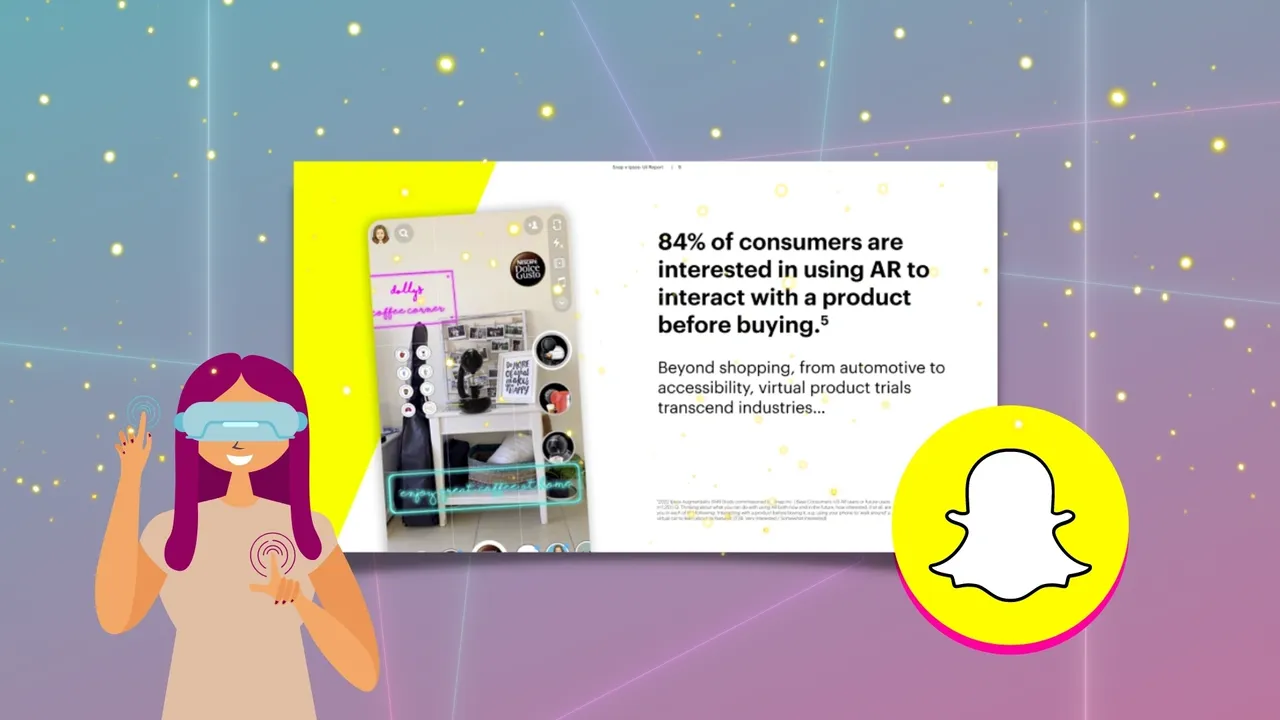While the Metaverse and Web3 are the top tech trends of the moment, capturing the attention of many of the key proponents in the digital space, AR may actually be a far more significant, practical innovation, with immediate use cases that can provide direct value and enhancement to your daily routines.
With AR glasses in development at several of the tech giants, it does seem like AR is going to become a far more significant element at some stage – likely before the VR-led Metaverse becomes a real thing.
AR Tomorrow
How do people really feel about AR, and why is this element being largely overlooked by businesses? To glean more insight into this, Snapchat recently partnered with Ipsos to conduct a survey of more than 25k people, across 16 markets, to get a better understanding of how both consumers and brands really view AR and its potential value. You can download Snap’s 34-page ‘Augmentality Shift’ report here. Let’s take a look at some of the key highlights.
First off, the report highlights the advanced opportunities of AR, beyond just fun filters and tools. As per Snapchat:
“When it comes to Augmented Reality and its full potential, brands are missing out by only seeing the tip of the iceberg.”
True enough, Snap says that by 2025, around 60% of people in the US, and almost all people who use social/communications apps will be frequent AR users. Again, these types of predictions are likely us getting ahead of ourselves with the Metaverse – and behind ourselves with Web3 projects like NFTs. Maybe, AR should be the real focus for the next real stage of tech development and innovation, which is essentially true when considering this statistic – 6/10 people now identify shopping as their main reason for using AR.
The capacity to use advancing AR tools to complement the shopping journey is significant, especially amid the rise of online shopping and the role that AR can play in supplying more purchase context. Snap says that 84% of consumers are interested in using AR to interact with a product before buying. But it’s more than just this – AR can also serve a range of educational and inspirational purposes, and provide expanded engagement, in various ways. However, according to the report, there’s a significant gap between how consumers view the value of AR and what brands are currently delivering.
Again, it feels like distractions of the longer-term Metaverse, which is a less tangible, more conceptual project, are pulling brands away from the potential opportunities that exist right now, in what would likely be a bridging technology between these two experiences. AR, in this sense, may well be of more immediate benefit, versus trying to come up with digital collectibles for promotions or building a VR world for your brand. The report also digs deeper into how AR elements can complement the online shopping journey and how they can help build brand community and engagement.
The Wrap
The report last talks about a range of tips on how businesses can incorporate AR into their process, including key considerations for effective implementation. Though a little lengthy, it’s a good guide overall, which could serve as a wake-up call in some ways to break business cycles, backing into what’s currently more valuable.
Of course, some would say that the Metaverse concept and Web3 both incorporate AR, so it’s all part of one big next-level push. But it’s not. Each of these elements is a separate AR experience that can be created to deliver real, practical values to your campaigns.
Subscribe to our ‘Bottoms Up!’ Newsletter. Get the latest social media blogs about news, updates, trends, and effective social media strategies to take your business to the highest level from Tristan Ahumada and Jeff Pfitzer.
Sources

